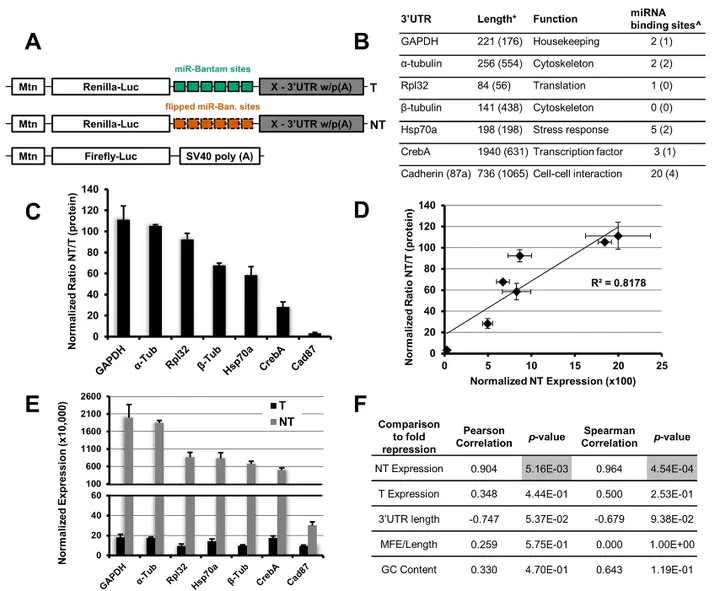 Image credit: Scientific Reports
Image credit: Scientific Reports
Abstract
MicroRNAs are well known regulators of mRNA stability and translation. However, the magnitude of both translational repression and mRNA decay induced by miRNA binding varies greatly between miRNA targets. This can be the result of cis and trans factors that affect miRNA binding or action. We set out to address this issue by studying how various mRNA characteristics affect miRNA-mediated repression. Using a dual luciferase reporter system, we systematically analyzed the ability of selected mRNA elements to modulate miRNA-mediated repression. We found that changing the 3′UTR of a miRNA-targeted reporter modulates translational repression by affecting the translation efficiency. This 3′UTR dependent modulation can be further altered by changing the codon-optimality or 5′UTR of the luciferase reporter. We observed maximal repression with intermediate codon optimality and weak repression with very high or low codon optimality. Analysis of ribosome profiling and RNA-seq data for endogenous miRNA targets revealed translation efficiency as a key determinant of the magnitude of miRNA-mediated translational repression. Messages with high translation efficiency were more robustly repressed. Together our results reveal modulation of miRNA-mediated repression by characteristics and features of the 5′UTR, CDS and 3′UTR.